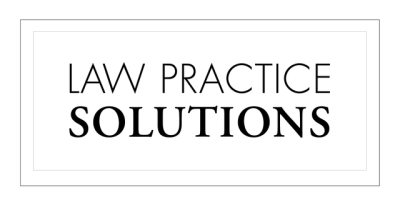
Last month, we started our look at the workplace dynamics accompanying the newest generation’s entry into the multi-generational legal profession and how successful law firms will need the skills to minimize turnover and increase productivity to create a healthy work culture. The discussion continues this month.
The good news is that leaders have other motivators that positively impact almost all employees. Psychologists refers to them as the three “almost” universal motivators.1 They are:
- To know and be known: This motivator speaks to personal identity and not being a nameless face in the crowd. (See last month’s Michigan Bar Journal for the skills needed to implement this motivator.)
- To be a part of something bigger than oneself: This is not a new concept. Just look at the multibillion-dollar sports merchandise industry that promotes team identity, team loyalty, and team pride. How can you encourage your employees to see themselves as a member of your team?
- To make a positive difference for someone or something: Most people want their time, effort, and talent to be used to achieve something positive, believing their life and work have significance above and beyond getting a paycheck.
BEING PART OF SOMETHING BIGGER THAN ONESELF
Creating high-performing teams is both an art and a science. The following are a few practical strategies (among many others) for building high-functioning teams in law firms.
Be familiar with the time and psychological dynamics involved in team building
Dr. Larry Richard, a lawyer and psychologist, and Julia Hayhoe, a lawyer and consultant, say that building high-functioning teams is a four-stage process which, on average, takes a minimum of six months.2 If teams do not meet face-to-face regularly with all members present, the process is slower.
Further, there are dynamics unique to building law firm teams which can thwart success. Many lawyers do not naturally work in teams as both our personality traits and training reinforce individuality and autonomy. Also, our comfort with the adversarial process can cause law firm teams to get stuck at an earlier stage in the team-building process, never becoming cohesive.3
Eat together
Encourage and create opportunities for team members to eat together, interact with one another, and get to know each other. Teams that do so perform better.4 Designate a specific lunch or break room to facilitate team meals.
Anonymous idea generating
Organizational psychologist and management consultant Adam Grant suggests an approach that transforms the typical group brainstorming exercise into a powerful, egalitarian process for obtaining the best ideas from your team.5 Instead of gathering the team in person to discuss ideas for addressing challenges:
- Start by asking everyone to generate ideas separately.
- Pool the ideas and share them anonymously among the group. Have each member evaluate the suggestions on their own.
- Bring the team together to select and refine the most promising options.6
This approach helps eliminate the perceived pressures for some employees to align with the boss or other allies that are common in these sessions.
Create meaningful collaboration through cross-functional relationships
Create pairs or small teams of cross-functional employees to tackle projects and/or solve problems. The more you know about each team member’s purpose for doing what they do, the more you can create a sense of belonging and positive work relationships.7
MAKING A POSITIVE DIFFERENCE
Most employees desire a sense of purpose and meaning in their work.8 “People who find meaning in their work don’t hoard their energy and dedication. They give them freely, defying conventional economic assumptions about self-interest ... [t]hey do more — and they do it better.”8
Here are a few ideas for generating a sense of purpose and meaning among your employees.
Communicate your purpose, mission, and values
Ralph Waldo Emerson wrote, “Nothing great was ever achieved without enthusiasm.”9 Capture your employees’ enthusiasm by communicating your firm’s purpose, mission, and values in emotionally evocative language.
Many years ago, reporters toured the Texas Heart Institute founded by Dr. Denton Cooley, a heart surgeon credited with lowering the mortality rate from 70% to 8%.10 One reporter, seeing a hospital employee mopping the floor, asked, “What do you do here?” The employee’s response: “We fix hearts here!” This is an example of an employee who knew his value and how his role supported the purpose of the organization!
Consider the following vision and mission statements — which are more motivating?
“We are the premier business firm in the metro area.”
- or -
”We help people build successful businesses.”
“We are the best at criminal defense.”
- or -
“We fight to prevent people from being prosecuted or jailed unfairly.”
“The area’s leading divorce and family law firm.”
- or -
“We build strong families while helping people leave broken marriages.”
Communicate your mission, vision, and values consistently to employees. Make your purpose your guiding principles for every decision and every problem.
Examine the purpose that drives excellence Look for self-motivated, high-performance employees. Learn what drives them. Ask if they are willing to share their story and motivations. This can be very powerful, and doing so also recognizes your employees as people with unique valued experiences.11
Act with integrity
“When a company promotes its purpose and values, but those words don’t apply to the behavior of senior leadership, they ring hollow. Everyone recognizes the hypocrisy and employees become more cynical. The process does harm.”12
CONCLUSION
In summary, when you have successfully implemented the three almost universal motivators, you’ll want every employee in your firm to be able to say:
- My managing partner knows me. I know if I am doing a good job. (To know and be known.)
- I am part of a team that supports one another and takes pride in what we do (To be part of something bigger than oneself.)
- I know why my job matters. (To make a positive difference for someone or something.)
And, not surprisingly, you will find that discretionary effort and productivity will have increased exponentially.